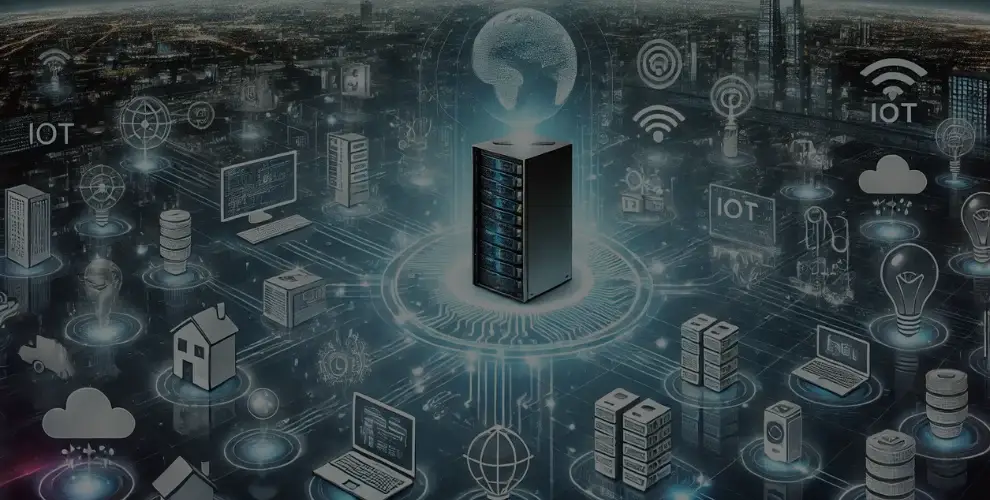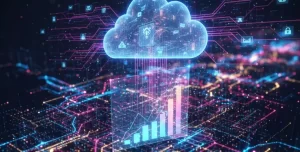
Edge Computing in IoT: How It Enhances Real-Time Data Processing
Table of Contents
Introduction
Welcome to WikiGlitz!
We’ve brought you this amazing blog on “Edge Computing in IoT: How It Enhances Real-Time Data Processing.” As IoT (Internet of Things) devices become increasingly common, the need for faster, more efficient data processing has grown.
This is where edge computing steps in. Edge computing in IoT is transforming how real-time data is handled, offering numerous benefits over traditional cloud-based solutions.
Let’s dive into the world of edge computing and explore its significance in IoT.
Key Takeaways:
- Edge computing in IoT improves real-time data processing by bringing computation closer to data sources.
- It offers enhanced security, reduced latency, and lower bandwidth usage compared to traditional cloud computing.
- By leveraging edge computing, businesses can achieve more reliable, faster decision-making in IoT applications.
What is Edge Computing in IoT and How Does It Work?
Edge computing in IoT involves processing data near where it is generated, known as the “edge,” rather than sending it to a centralized cloud for analysis.
This approach allows IoT devices, such as sensors, cameras, and other smart gadgets, to handle data locally and deliver real-time responses.
For instance, in a smart home, edge devices can instantly process data from sensors to adjust lighting, temperature, or security systems without relying on cloud servers.
This local processing not only speeds up responses but also minimizes the need to transfer large volumes of data over the Internet.
As a result, it reduces network congestion, lowers latency, and enhances the overall efficiency of IoT systems, providing a seamless user experience.
Why is Real-Time Data Processing in IoT Important?
Real-time data processing in IoT is important for applications requiring immediate responses, such as autonomous vehicles, healthcare monitoring, and industrial automation.
With edge computing, IoT devices can process data quickly at the source, enabling faster reactions and decision-making.
This minimizes delays, known as latency, which is especially important in time-sensitive environments.
What are the Benefits of Edge Computing in IoT?
- Reduced Latency: Processing data locally eliminates the delays associated with sending information to the cloud, allowing for real-time analysis.
- Enhanced Security: Keeping data at the edge minimizes the risk of data breaches during transmission.
- Lower Bandwidth Usage: By processing data on-site, only relevant information is sent to the cloud, reducing bandwidth requirements and associated costs.
How Does Edge Computing Compare with Cloud Computing in IoT?
The primary difference between edge and cloud computing in IoT lies in where data processing occurs. In cloud computing, data is transmitted to distant servers for processing.
This can introduce latency and bandwidth issues, especially with large data volumes.
On the other hand, edge computing processes data locally, near the source, offering faster and more efficient data handling.
While cloud computing is ideal for extensive data storage and analysis, edge computing excels in real-time, low-latency applications.
What are Some Examples of Edge Computing Applications in IoT?
- Smart Cities: Traffic management systems use edge devices to analyze real-time traffic data and adjust signals accordingly.
- Healthcare: Wearable health devices monitor patients’ vitals in real time and alert healthcare providers if an issue arises.
- Industrial IoT: Manufacturing plants use edge computing to monitor equipment, predict maintenance needs, and prevent breakdowns.
What are IoT Edge Devices and How Do They Contribute to Data Processing?
IoT edge devices are gadgets like sensors, actuators, and cameras that collect and process data locally. They play a pivotal role in real-time data processing in IoT by performing computations on-site.
For example, a security camera can detect motion and alert authorities without sending raw video data to the cloud, thereby enhancing both response speed and data privacy.
What are the Security Implications of Edge Computing in IoT?
Edge computing in IoT adds an extra layer of security by minimizing the need to transmit sensitive data over networks.
By processing information locally on IoT edge devices, the risk of data interception during transmission is significantly reduced.
This local processing is particularly beneficial for applications involving personal or confidential information. However, while edge computing enhances security, it also means that IoT edge devices themselves can become prime targets for cyberattacks.
Therefore, securing these devices is crucial. To maintain data integrity at the edge, it is essential to implement robust security measures, such as encryption, regular software updates, and strict access control.
Strengthening the security of IoT edge devices ensures the safe and effective use of edge computing in IoT environments.
How Does Edge Computing Address the Challenges in IoT?
IoT devices continuously generate massive amounts of data, which can lead to issues such as bandwidth limitations, high latency, and security vulnerabilities.
Traditional cloud-based processing struggles to handle this influx efficiently, often resulting in network congestion and delayed responses.
Edge computing addresses these challenges by processing data closer to its source, directly on IoT edge devices.
This local data processing significantly reduces the amount of information sent over the network, alleviating congestion and minimizing latency.
Additionally, it enhances security by keeping sensitive data local, lowering the risk of interception. This makes edge computing a practical, scalable solution for expanding IoT applications.
How Does Edge Computing Architecture in IoT Look?
- Device Layer: Consists of IoT edge devices (sensors, cameras, etc.) that collect data.
- Edge Layer: Where data is processed and analyzed close to the source using local servers or gateways.
- Cloud Layer: Receives only relevant data for long-term storage, analysis, and strategic decision-making.
This multi-layered architecture ensures quick, efficient, and secure data processing.
Can Edge Computing Enhance IoT Data Analytics?
Yes, edge computing greatly improves IoT data analytics by allowing data to be processed and analyzed immediately, right where it is collected.
This means that edge devices, like sensors in a smart factory, can quickly analyze information about machinery performance, detecting any issues or inefficiencies on the spot.
As a result, factory operators receive real-time, actionable insights without the delays of sending data to a cloud server for processing.
This instant analysis not only speeds up decision-making but also helps maintain smooth operations.
By using edge computing, businesses can respond quickly to changes, optimize performance, and reduce potential downtime, all without depending solely on cloud-based processing.
Conclusion
In the end, edge computing is revolutionizing how IoT applications handle real-time data processing by bringing computation closer to the data source.
This approach not only significantly enhances processing speed but also boosts security by keeping sensitive data local and reducing the network load, optimizing overall performance.
At WikiGlitz, we are dedicated to providing insightful technology content like this on Edge Computing in IoT.
Don’t forget to check out our other blogs on the Internet of Things and related topics for more insights!
FAQ
What’s the main advantage of using edge computing in IoT?
The main advantage is real-time data processing, which allows for faster decision-making and reduced latency.
How is edge computing different from fog computing in IoT?
Edge computing processes data directly at the source, while fog computing adds an intermediate layer (local network) between the data source and the cloud for processing.
Why is edge computing important for IoT applications?
Edge computing is crucial for IoT applications that require immediate responses, improved security, and lower bandwidth usage.
Can edge computing handle large-scale IoT networks?
Yes, edge computing can efficiently manage large-scale IoT networks by distributing data processing across multiple edge devices, reducing the load on central servers.
How does edge computing impact IoT device power consumption?
Edge computing can reduce IoT device power consumption by processing data locally, minimizing the need for constant data transmission to the cloud.
Want to keep up with our blog?
Our most valuable tips right inside your inbox, once per month.
Error: Contact form not found.
WikiGlitz Team
Welcome to WikiGlitz, your ultimate destination for tech insights and innovation. Our expert team is dedicated to delivering free resources and professional advice on various technology topics, including Artificial Intelligence, Cyber Security, Cloud Computing, and more. We strive to empower our readers with up-to-date information and practical guidance, ensuring you stay ahead in the rapidly evolving tech landscape. At WikiGlitz, we are passionate about making complex technology accessible to everyone. Our team of seasoned experts curates content that is both informative and engaging, helping you understand and leverage the latest tech trends. Whether you're a tech enthusiast or a professional, WikiGlitz is your go-to source for reliable, expert-driven content. Join us on this journey to explore and embrace the future of technology.





